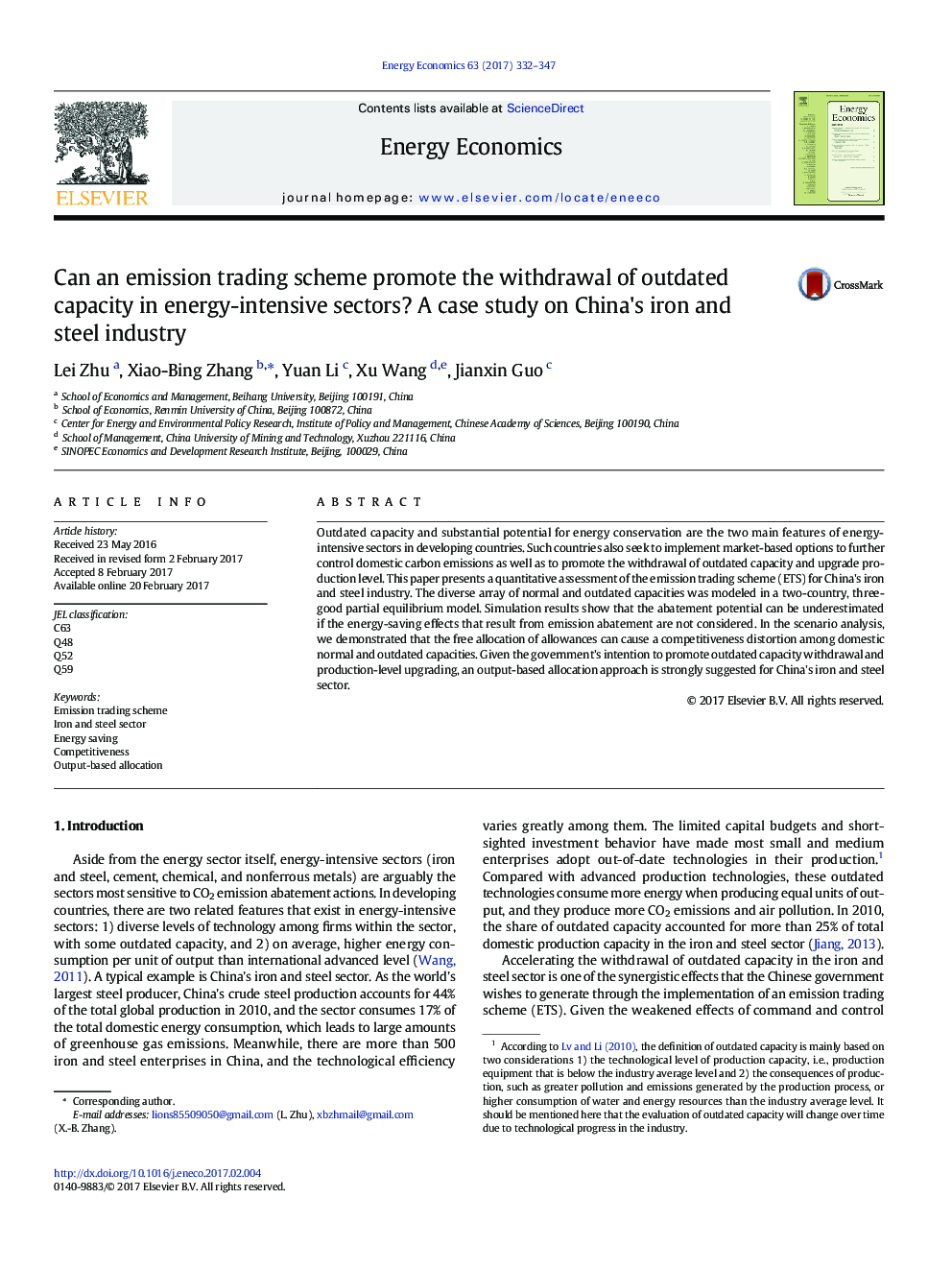| کد مقاله | کد نشریه | سال انتشار | مقاله انگلیسی | نسخه تمام متن |
|---|---|---|---|---|
| 5063743 | 1476701 | 2017 | 16 صفحه PDF | دانلود رایگان |
- A quantitative assessment of the emission trading scheme (ETS) for China's iron and steel industry.
- The diverse array of normal and outdated capacities were modeled in a two-country, three-good partial equilibrium model.
- The abatement potential can be underestimated if ignoring the energy-saving effects that result from emission abatement.
- The free allocation of allowances can cause a competitiveness distortion among domestic normal and outdated capacities.
- An output-based allocation approach is strongly suggested for China's iron and steel sector.
Outdated capacity and substantial potential for energy conservation are the two main features of energy-intensive sectors in developing countries. Such countries also seek to implement market-based options to further control domestic carbon emissions as well as to promote the withdrawal of outdated capacity and upgrade production level. This paper presents a quantitative assessment of the emission trading scheme (ETS) for China's iron and steel industry. The diverse array of normal and outdated capacities was modeled in a two-country, three-good partial equilibrium model. Simulation results show that the abatement potential can be underestimated if the energy-saving effects that result from emission abatement are not considered. In the scenario analysis, we demonstrated that the free allocation of allowances can cause a competitiveness distortion among domestic normal and outdated capacities. Given the government's intention to promote outdated capacity withdrawal and production-level upgrading, an output-based allocation approach is strongly suggested for China's iron and steel sector.
Journal: Energy Economics - Volume 63, March 2017, Pages 332-347
